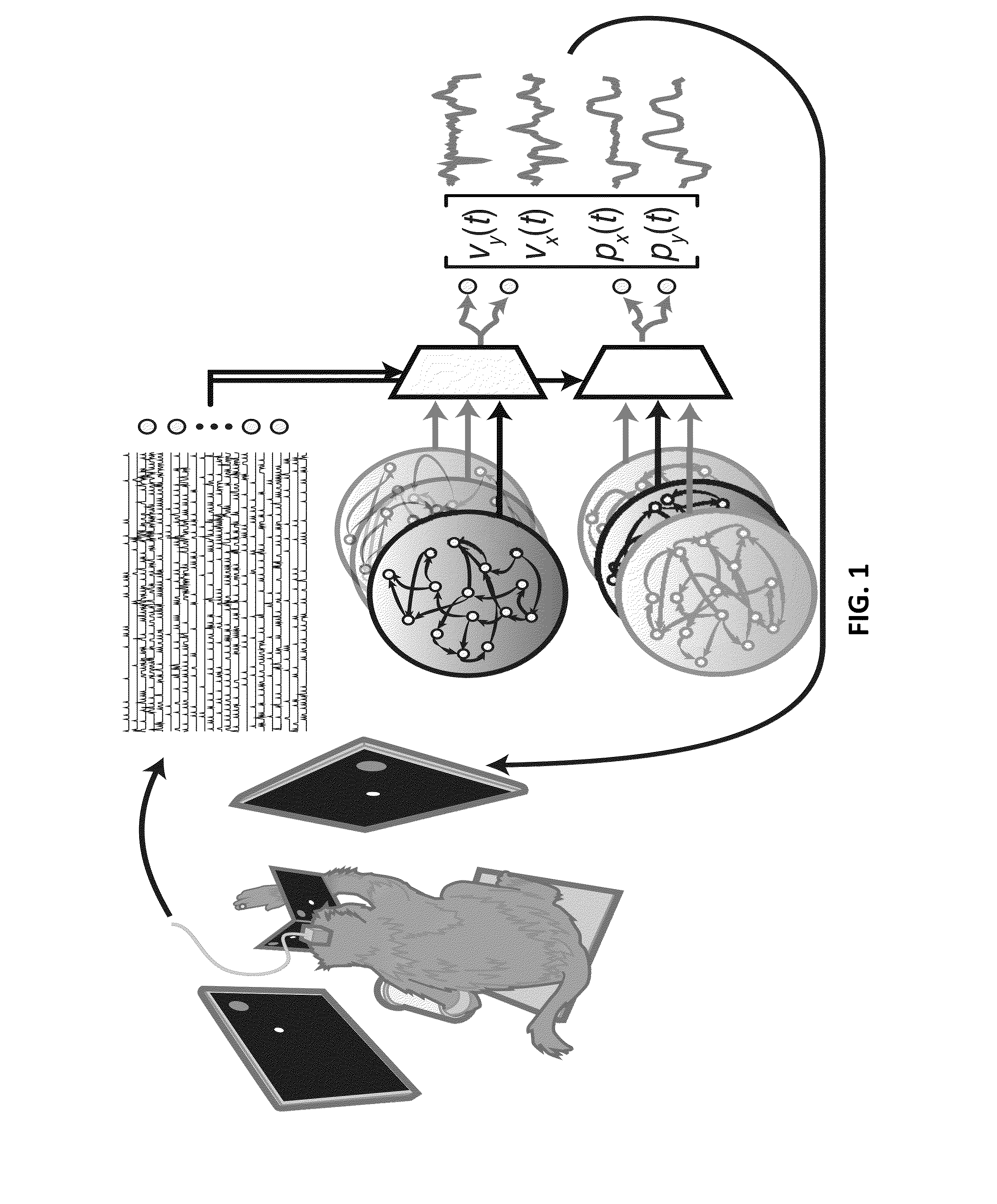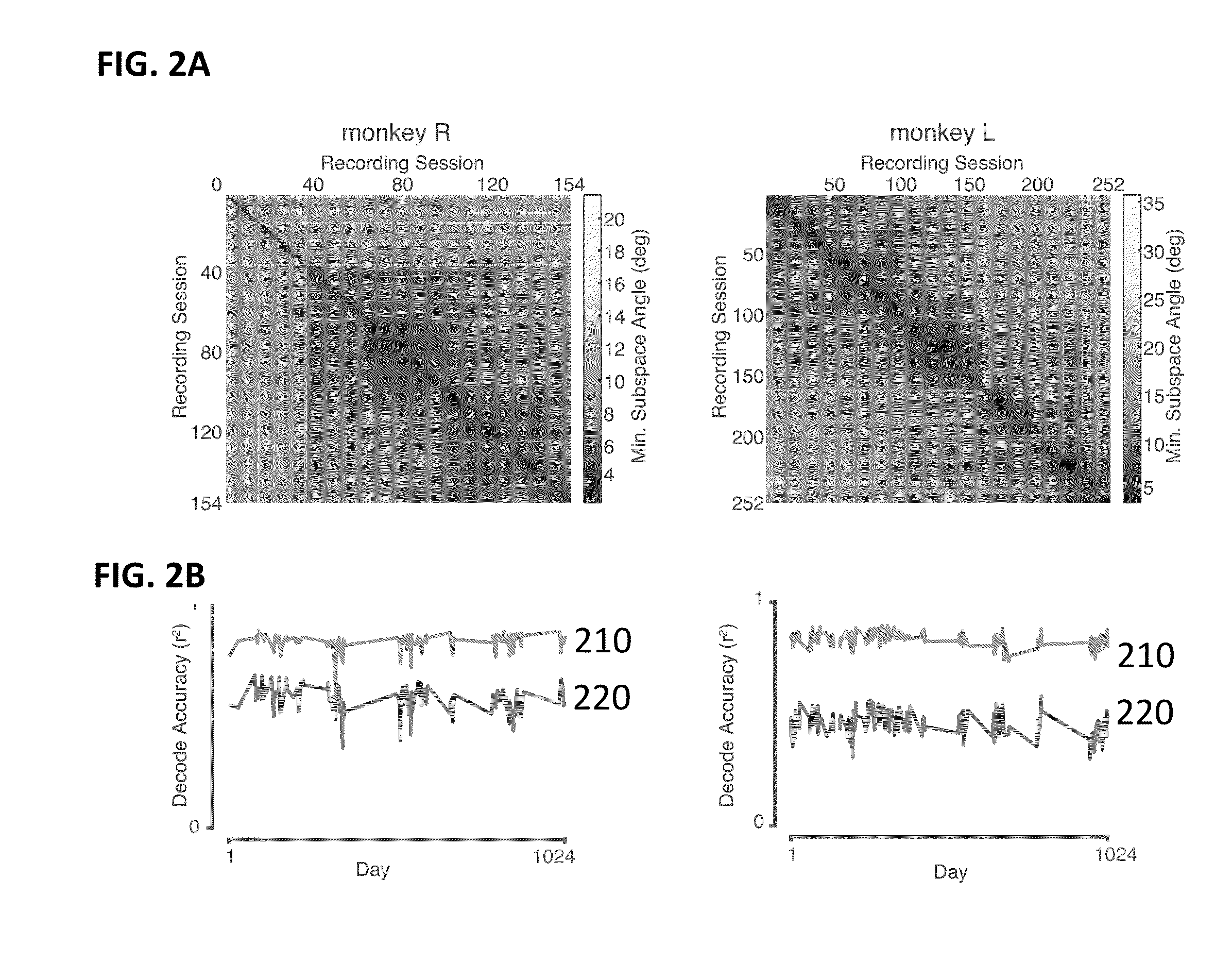Multiplicative recurrent neural network for fast and robust intracortical brain machine interface decoders
- Summary
- Abstract
- Description
- Claims
- Application Information
AI Technical Summary
Benefits of technology
Problems solved by technology
Method used
Image
Examples
Embodiment Construction
[0021]The present invention also referred to as Big-Data Multiplicative Recurrent Neural Network (BD-MRNN) is a supervised neural network and training method for incorporating and modifying multiple previous days training datasets (historical data) to improve both raw performance and robustness in the daily operation of brain-machine interface (BMI) decoders.
MRNN Definition
[0022]The generic recurrent network model is defined by an N-dimensional vector of activation variables, x, and a vector of corresponding “firing rates”, r=tan h(x). Both x and r are continuous in time and take continuous values. In a standard RNN model, the input affects the dynamics as an additive time-dependent bias in each dimension. In the MRNN model, the input instead directly parameterizes the weight matrix, allowing for multiplicative interactions between the input and the hidden state. One view of this multiplicative interation is that the hidden state of the recurrent network is selecting an appropriate ...
PUM
 Login to View More
Login to View More Abstract
Description
Claims
Application Information
 Login to View More
Login to View More - R&D
- Intellectual Property
- Life Sciences
- Materials
- Tech Scout
- Unparalleled Data Quality
- Higher Quality Content
- 60% Fewer Hallucinations
Browse by: Latest US Patents, China's latest patents, Technical Efficacy Thesaurus, Application Domain, Technology Topic, Popular Technical Reports.
© 2025 PatSnap. All rights reserved.Legal|Privacy policy|Modern Slavery Act Transparency Statement|Sitemap|About US| Contact US: help@patsnap.com



